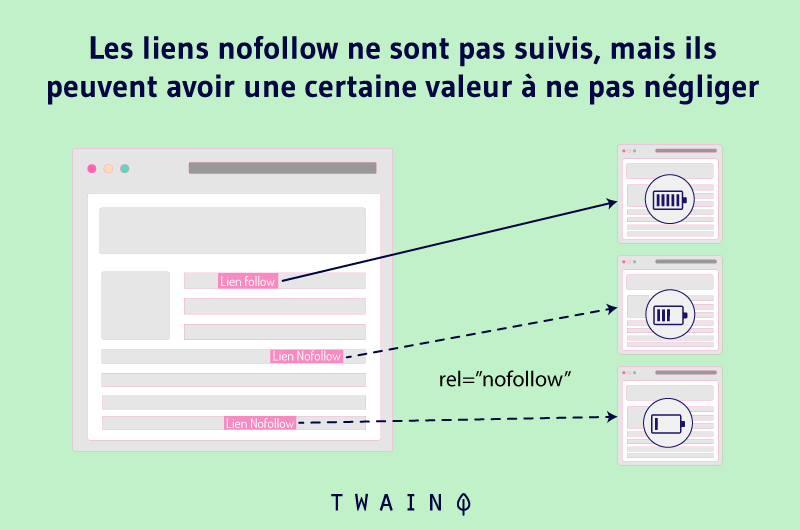A mirror site is a complete and compliant replica of an existing website with a different URL. Mirror sites are most often used to improve accessibility to the original website and to lighten the load on the computer server that hosts it when it generates too much traffic
In the same way that our image is reflected identically in the mirror when we look at ourselves, mirror sites are perfect and tangible copies of an original website.
They are useful to Internet users at various levels and in various places since they ensure a good user experience and fast loading of pages.
There is no doubt that this is an ingenious concept whose advantages are considerable and interesting. But depending on the use made of them, mirror sites can easily be counted among Black Hat SEO techniques.
This is therefore a multifaceted technique whose analysis is essential and it is therefore appropriate to study it in its smallest details.
SO :
- What does the term mirror site actually mean?
- What are the advantages ?
- What does it take to create a mirror site?
- What are the differential practices of the mirror site technique?
- What are the issues and consequences of mirror sites in terms of SEO?
- What to learn from using mirror sites?
In order to properly address the subject, we will take care, in the remainder of this article, to answer all of these questions.
Without further ado, let’s get started!
Chapter 1: Mirror site – Mirror site: General
Let’s begin our study of mirror sites by stating some generalities.
1.1. What exactly is a mirror site?
In the computer world and on the web, the term mirror is used to designate the exact copy of a set of files.
So by analogy, a mirror site or mirror site in English designates a site whose architecture and content are the full textual reproduction of another website.
This is a multi-faceted technique that needs to be analyzed and studied in great detail.
So :
- What does the term mirror site mean in concrete terms?
- What are the advantages?
- What does it take to create a mirror site?
- What are the different practices of the mirror site technique?
- What are the issues and consequences of mirror sites in terms of SEO?
- What can we learn from the use of mirror sites?
In order to properly address the subject, we will take care, in the rest of this article, to answer all these questions.
Without further ado, let’s get started!
Chapter 1: Mirror site – Site miroir : General
Let’s begin our study of mirror sites by stating a few general points.
1.1) What exactly is a mirror site?
In the computer world and on the web, the term mirror is used to designate the exact copy of a set of files.
Thus by analogy, a mirror site designates a site whose architecture and content are the textual and integral reproduction of another website.

Therefore, when we talk about mirror sites, we are talking about two or more websites having specific URLs while being perfectly identical to each other in content and form.
To put it simply, the mirror site is the exact copy of another site, that is to say a website (M) which offers exactly the same content as a so-called main website (P).
In view of this definition, it appears legitimate to think that the concept of mirror sites directly appeals to that ofduplicate content (double content).
However, despite some of their obscure features, mirror sites are not categoricallyBlack Hat SEO.

So to speak, the technique of mirror sites is usually used when it comes to preventing or correcting the saturation of a network.
So, when the main site server (P) is unavailable, users can turn to the mirror site server (M) to access data.
To do this, mirror sites are hosted on separate servers. They are therefore accessible and available through different addresses all over the world.
The existence of mirror sites makes it possible to relieve the host of the main website (the main server) by distributing the high traffic generated on servers located in other geographical areas.
That said, when are the real benefits and workings of mirror sites?
1.2. The advantages of a mirror site
The advantages you can benefit from by creating mirror sites are numerous and here is a list of the most important ones:
1.2.1. Mirror sites facilitate access to Internet users located on the other side of the world
The primary purpose of mirror sites is to facilitate access to a website’s products and services anywhere in the world by faithfully duplicating its content on separate local servers.

Mirror sites thus represent a real load balancing device since they allow websites with high traffic to operate efficiently by sharing their work between several servers.
When a site initially hosted in France is mirrored on another server in Canada for example, Canadians will be able to benefit from a good connection to the site. Despite the distance, they will be able to obtain a relatively short server response time.
In other words, mirror sites are created to facilitate access to users who are thousands of kilometers from the original server. The mirror server is therefore generally located on another continent to allow surrounding Internet users to benefit from a fast and reliable connection.
1.2.2. Mirror sites help ensure better download speeds for large files
When the original site attracts significant traffic, mirror sites can serve as a sort of “relay” and make the site’s files downloadable on other servers.
This is much more observed on websites that offer software for download with regular updates.
These sites see a significant number of downloads which are distributed on carbon copies of the original site for higher download speed.
This is why major web and IT companies like Sun Microsystems, Microsoft and many others have mirror sites where their browser software can be optimally downloaded.
1.2.3. Easy access to censored content
The mirror site technique can also be applied to make censored information available in places where access is limited or prohibited.
In other words, copying a particular website can help you spread its content and articles in places where they are censored.

Remember, in 2013, when the Chinese authorities decided toblock people’s access to foreign media publications like The Wall Street Journal, Bloomberg and the New York Times, mirror sites have been used to restore access to information and circumvent government censorship.
Apart from the eviction of thecybercensure, mirror sites are also set up to circumvent computer blockages.
Indeed, a website can easily end up blocked and inaccessible after a hack or any other computer attack depending on the severity.
In order to overcome this blocking and allow site users to continue their activities, mirror sites are an effective solution.
To make this bypass possible, simply replicate a mirror site on a server dedicated for this purpose, combining it with the use of a website vacuum cleaner (real-time replication and download tool of the site). ‘all data from a website) and that’s it.
Thus, after the original website is blocked, an identical, functional and ready-to-use website will take over.
1.3. The different elements necessary for creating a mirror site
For the creation and proper functioning of a mirror site, several elements are necessary:
1.3.1. A powerful server
As you may have guessed, the role of servers in setting up a mirror site is essential.
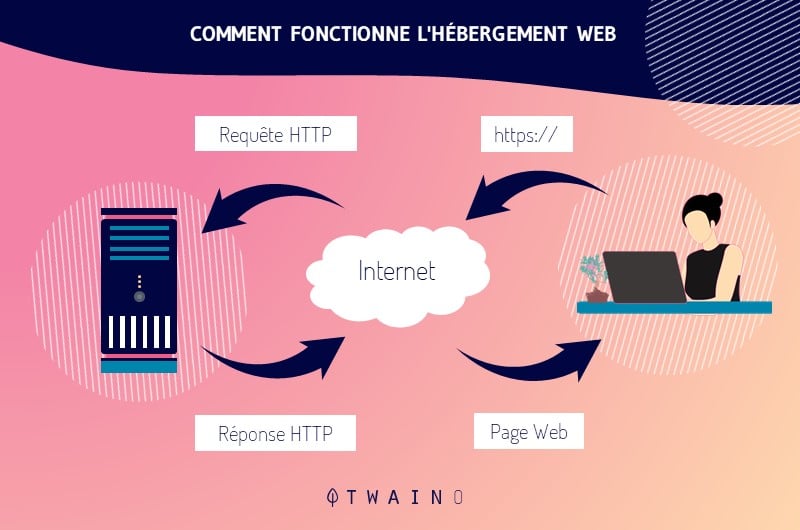
This is the basic element for creating a mirror site and you ideally need a high-performance server, capable of supporting a large load.
Indeed, for efficient hosting adapted to mirror sites, it is advisable to opt for a server guaranteeing a considerable data transfer rate (bandwidth) and having a significant storage capacity to accommodate all of the copied data.
1.3.2. Website copy tools
You probably imagine that to duplicate a website, it will take much more than a simple copy and paste.
The creation of mirror sites requires the use of appropriate and specific replication tools, which allow an exact copy to be made.
As we have seen, website reproduction can easily be done using a website vacuum cleaner.
The website vacuum cleaner is software which, as its name suggests, allows you to vacuum (copy) a website in whole or in part, and then archive it on a storage device, particularly a server.

The website replication technique based on the use of a site vacuum allows you to obtain excellent identical copies.
However, it should be noted that original sites designed with a content manager (CMS) will only produce non-functional copies.
The result will contain, so to speak, only replicas of the static content (i.e. just the HTML rendering of the web pages) of the site.
Alongside the website vacuum cleaner, website backup techniques are also a solution of choice.

Indeed, incremental backup is a powerful replication solution suitable for copying large quantities of data.
Also called incremental backup, it is a particular backup technique which is as follows (example established over one week):
- First (Monday), a complete backup or copy of the pages of the original site and its files is made.
- Then, in a second step (on Tuesday), a second backup (the actual incremental backup) is carried out. This only concerns data that has been modified or added since the previous backup (web hosting or email data, for example).
- Thirdly and so on (Wednesday, Thursday, etc.), only the data modified since the last backup will be copied.
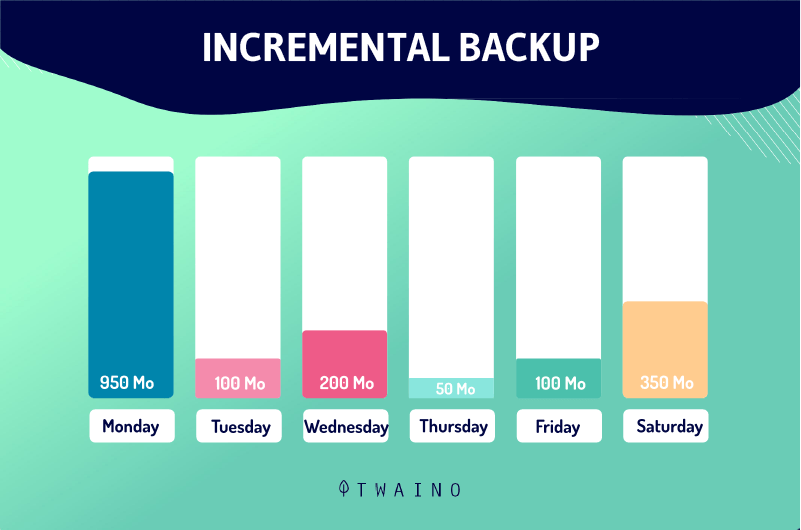
This backup scheme is practical and very effective.
It makes it possible to optimize both the duration of the replication process and the server load (CPU) as well as the storage space occupied by the backup data.
1.3.3. A domain name specific to each mirror site
Duplicate domain names, also called mirror URLs, are different URLs which lead to a single IP address and which offer identical information, hosted on a single server to which they are all connected.
Well, that’s not what we’re talking about here.
Indeed, mirror sites have their own domain names which lead to specific and different servers.
Generally on the web, to designate a mirror site, you start by writing the name of the domain following the “www” with a number greater than or equal to 2.
So www2.twaino.com would be a mirror site of the websitewww.twaino.com.
When the name www2.twaino.com is entered in the address bar of the web browser, the page displayed will then be that of the mirror site. However, although the result obtained comes from the site www2.tawino.com, in the address bar, the name www2.twaino.com is replaced bywww.twaino.com to reassure the user that they are indeed on the brand’s official website.
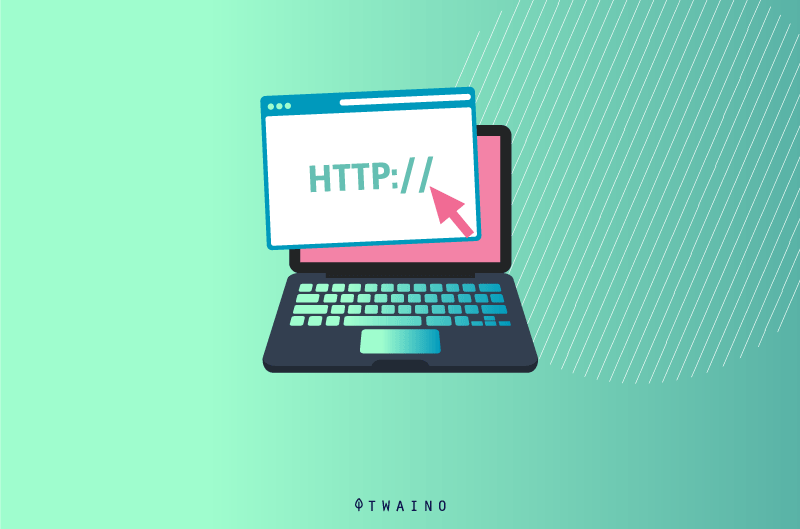
Finally, remember that there is no official and exhaustive nomenclature for mirror sites.
Apart from the fact that they are commonly used, names starting with www2, www3, www4, www…etc, do not constitute the standard. You are therefore free to name your mirror site as you wish.
Thus, a site whose name begins with www2 is not necessarily a mirror site and not all mirror sites necessarily begin with www2, www3 or www4, etc.
1.4. How to maintain your mirror site
In practice, after its creation, the mirror site is frequently updated to ensure the conformity of its content with that of the original site.
And for good reason, unlike a mirror (object) which reproduces the image and movements of the person being looked at, mirror sites are one-way.
In fact, the mirror site is a frozen copy of the main website. It is therefore able to provide only the static content of the original website even if the latter is a dynamic website.
In other words, a mirror site is incapable on its own of providing interactive services in relation to the original site, such as adding comments and/or new content.
It is therefore often necessary to make occasional modifications to the mirror site files in order to give users the perfect illusion of being on the main site.
To establish unison between the mirror site and the main site, synchronization of the sites and their files is crucial.

Furthermore, it is only thanks to data synchronization that the circumvention of censorship and computer attacks using the technique of mirror sites is possible.
When it comes to a dynamic website, reverse proxy options (reverse relay between users and the network of internal servers) are particularly the most suitable.
1.5. What should a Mirror Site not be confused with?
The mirror sites process, by its principle, its operation and its uses, resembles many other techniques, from which it should be distinguished.
1.5.1. Le Computer Network Delivery (CDN)
Computer Network Delivery or CDN for short is a set of data replicas hosted on different servers and located here and there around the world.
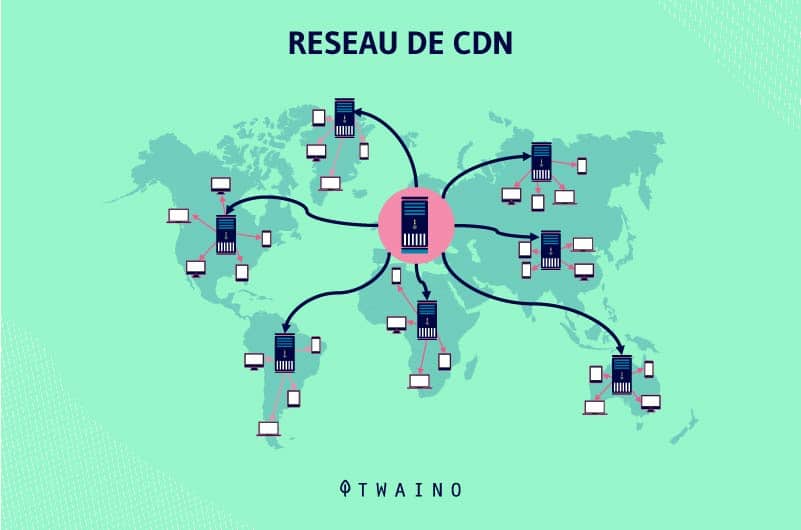
If during mirroring, it is the original site itself as well as its content which are identically duplicated, here in the CDN, it is only the cache data of the main site which is duplicated.
Like mirror sites, Computer Network Delivery also makes it easier to access information from various locations.
One of the particularities of the CDN lies in the fact that it is able to respond to user requests (offer streaming video and/or audio content, for example), even when bandwidth is reduced.
1.5.2. Le Cybersquatting
Also known as cybersquatting in French, cybersquatting corresponds to the acquisition, registration and unauthorized use of internet domain names identical or similar to existing brands, company names or names of people.

This rather detestable practice is closely and remotely similar to identity theft.
Generally, the objective is either to:
- Return the name of the domain to the beneficiary in return for payment;
- Do profiling based on the domain name;
- Or, sully the reputation and visibility of the real owner, by carrying out bad actions in his name.
The actions of a mirror site can, wrongly, be interpreted by Internet users as being the work of cybersquatting due to the similarity of the domain name with that of the main site.
Note that cybersquatting is rightly considered by many to be counterfeiting, or even a criminal act subject to criminal sanction in certain countries.
1.5.3. Le Typosquatting
Typosquatting is a URL hijacking technique that involves purchasing numerous domain names similar to those of well-known websites with intentional typos.
It is another form of cybersquatting based on the possibility that cybernauts, without doing so on purpose, make a typographical error by entering the URL of a website in the address bar of their web browser (as a example, www.twano.com instead ofwww.twaino.com).
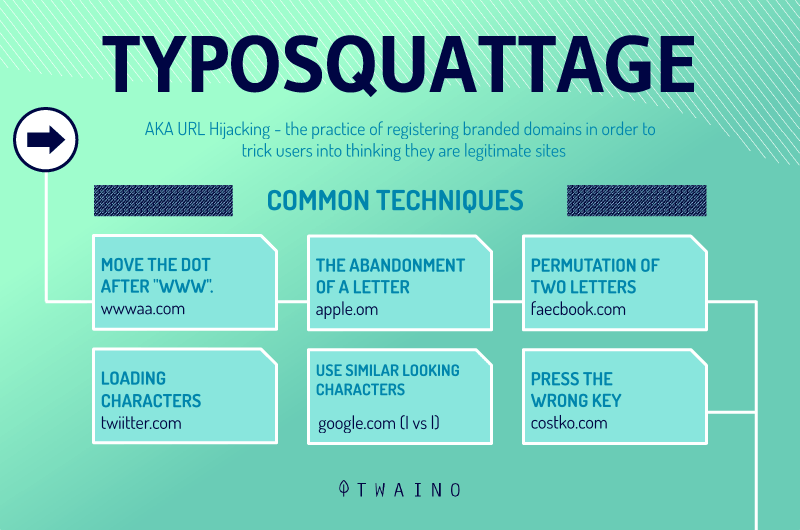
The objective here is to obtain as many visitors as possible by taking advantage of the notoriety of other websites.
This practice is typical of hackers, who maliciously create alternative websites that imitate as closely as possible the appearance and feel of the intended destination.
Thus, the Internet user does not realize that he is on a different site from the one he intended to visit.
We therefore understand how the technique of mirror sites can be similar to that of typosquatting.
The typosquatter can then steal personal information (identifiable information, passwords, secret codes, and others).

Worse still, he can use this little lack of attention on the part of the Internet user to download malware (malicious file) on his device (smartphone, tablet, PC or even server).
In rare cases, typosquatters simply offer services and products that compete with the original site.
1.5.4. The Fishing
Frenchified as phishing or swindling, the term phishing is used to designate a cybercriminal technique whose murder weapon is nothing other than a disguised email.

Indeed, this is a cyberattack not based on a computer flaw, but rather on the naivety and negligence of Internet users.
The hacker deceives the Internet user by pretending to be a trusted entity (their bank, a member of their company, for example) through an email, in order to extract confidential information.

These hackers go so far as to completely replicate an organization’s website (like a mirror site), waiting for the Internet user to connect to it to extort their connection data and other personal information.
This is the most widespread cyberattack technique and appreciated by criminals, who continue to improve it over the years.
It is therefore important to remember that a mirror site is not just an exact copy of another website. But both the copy and the main site belong to the same author.
Chapter 2: The challenges of mirror sites
The use of mirror sites and their SEO issues are numerous and diverse.
2.1. Mirror site et Spamdexing : Le Link Farming
Spamdexing is to Black Hat SEO what darkness is to night.

It is a set of prohibited techniques, essentially based on the use of fake links which allow the abusive referencing of web pages in the SERPs.
If spam on the web is illegal, it is simply because it allows people to be deceived.algorithms relevance of search engines.

Unfortunately, the illegal use of mirror sites to improve the ranking and accessibility of a site is a widely used spamdexing technique.
Indeed, the mirror site process is deliberately used to artificially increase the presence and relevance of sites on search engines.
This method appreciated by Black Hat SEO SEOs combines in addition to duplicate content, the use oflink farming on mirror sites.
Link farming, to put it simply, consists of creating a group of several websites which provide reciprocal links to each other.
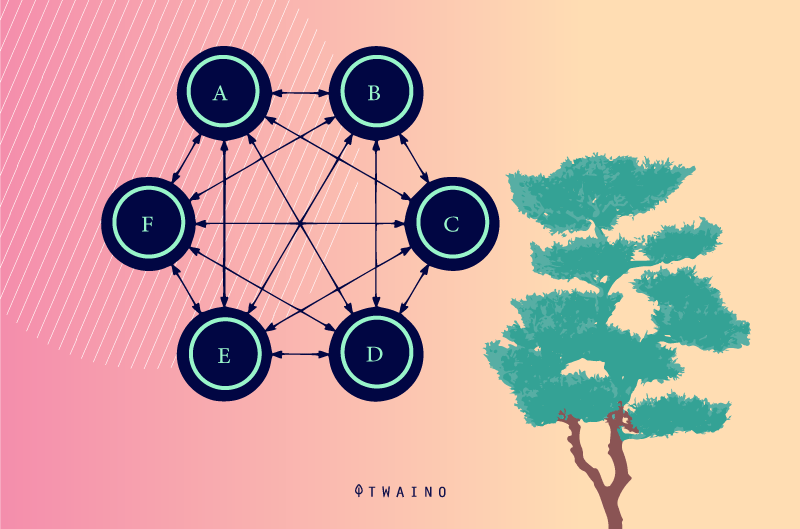
Also called link farming or link farming in French, it is a fraudulent technique which makes it possible to improve the ranking of each of the sites in this network in the SERPs.
To do this, the link farm plays on one of the many PageRank (rating) criteria of websites on search engines: the number ofbacklinks.
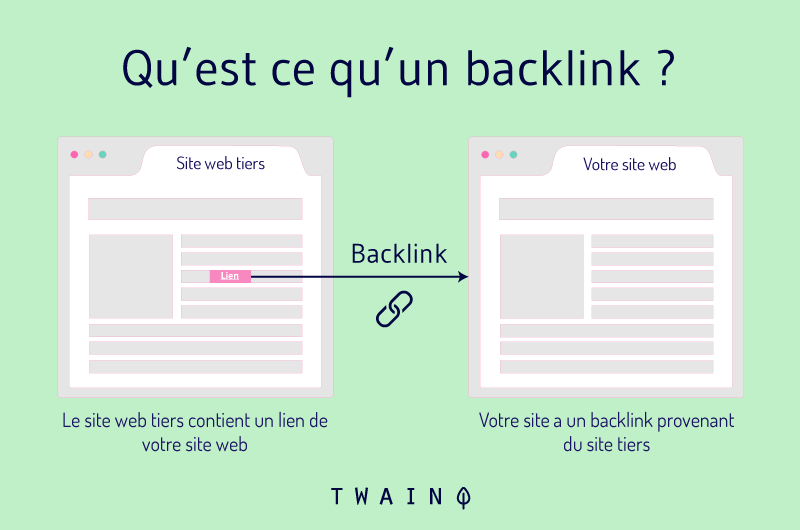
Indeed, the more inbound links there are to a website, the more popular it becomes with the PageRank algorithms and the higher it will be positioned in the search engine rankings.
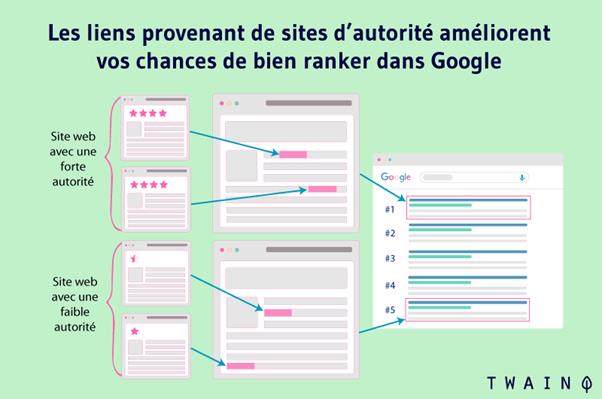
IIn our context, link farm websites are nothing more than mirror sites. Consequently, it is a single site (logical entity) which exchanges reciprocal links (physical entity).
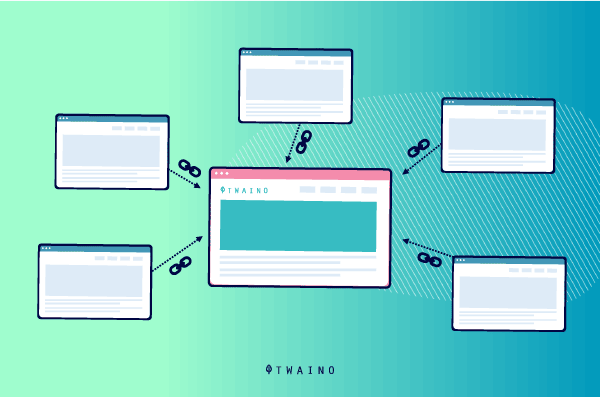
The application of this technique using mirror sites is one of the least ethical forms of link farming.
The discovery of these sites by search engines most often leads to the outright deletion of the entire network of mirror sites from their index.
2.2. Mirror sites and White/Gray Hat SEO
Contrary to what one might think, mirror sites do not only serve the dark side of natural referencing.
Yes, they are not systematically used for dishonest and illegitimate purposes.
2.2.1. The White Hat SEO side of Mirror Sites
We now know the role of mirror sites in improving the accessibility and operation of large-scale download platforms and other sites offering high-resolution visuals, videos or even heavy animations.
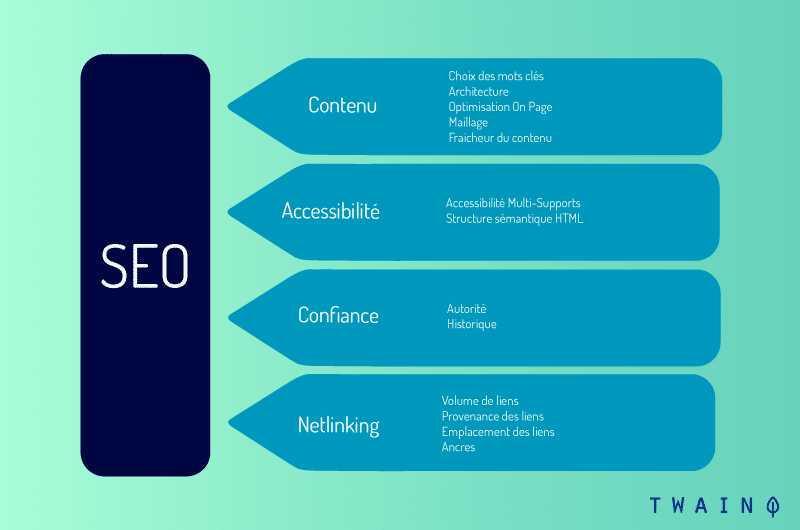
The creation of mirror sites for this type of website makes it possible to obtain proper functioning, good accessibility and availability in several regions of the world.
When the content of these mirror sites is translated into other languages, the results obtained are no longer considered to be mirror sites.
These exact, translated copies of the original website are an integral part of White Hat SEO.

And for good reason, such sites are different in the form of their content even if the meaning is the same.
In addition, they are hosted on servers located in different geographic areas and specific to their translation language.
Furthermore, the various language versions of the main website are most often accessible from a home page, where their URLs are clearly listed.The original version of the website is preserved without being blocked at the file levelrobots.txt and valuenofollow de l’attribut rel (rel = “nofollow”).
2.2.2. The borderline technique of Mirror Sites: Gray Hat SEO
In life as in SEO, nothing is ever black or white. It is then appropriate to highlight the Gray Hat SEO side of mirror sites.
Here the technique of mirror sites is used in a rather particular way with the intention of innocuously fooling the search engine indexing robots.

Indeed, search engine crawlers are algorithms only capable of entering and processing textual content (words and/or expressions).
Using this flaw, mirror sites that are strictly identical in content and not in form are created.
The content of these mirror sites is therefore transformed so that the information offered to users on all sites is the same only in terms of meaning and idea.
Thus, the texts are reformulated, the titles, the logo as well as the key words are modified, by professionals in order to perfect the technique.
Consequently, in their prospecting, search engine robots will have no suspicion of the deception, and will go so far as to approve mirror sites and even promote their backlinks.
2.3. Mirror sites in Flash reinforcement mode
Until recently, websites made entirely of Flash animations were poorly referenced by search engines.
And for good reason, search engine indexing robots had until then great difficulty recognizing, analyzing and understanding the programming language used (ActionScript).
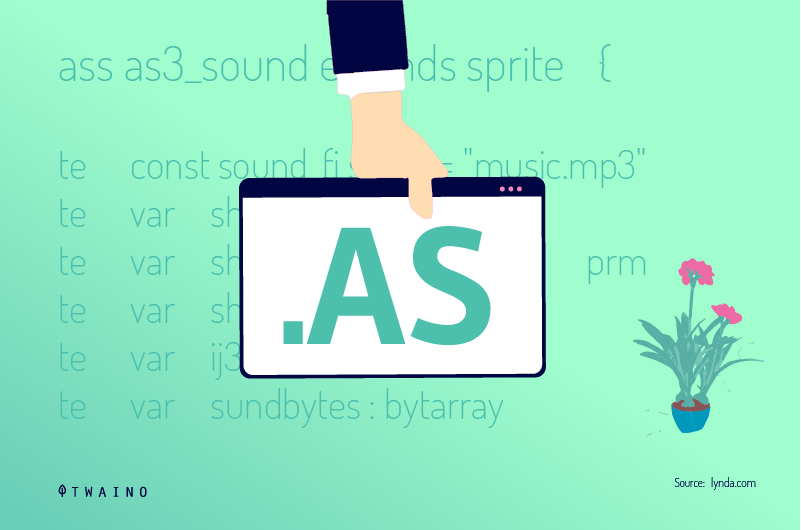
It then seemed logical, to facilitate the optimization and referencing of a website based on Flash animations, to set up a mirror site in html or xhtml.
However, such a solution is no longer relevant today, because the majority of search engines and particularly Google are managing to identify, understand and decipher the various animations as best they can.
It therefore becomes necessary to prohibit access to the mirror site by search engine indexing robots.To do this, it is appropriate, at file levelrobots.txt (Disallow), block the mirror site and implement the non-standard value (nofollow) of the rel attribute in the respective lines of code.
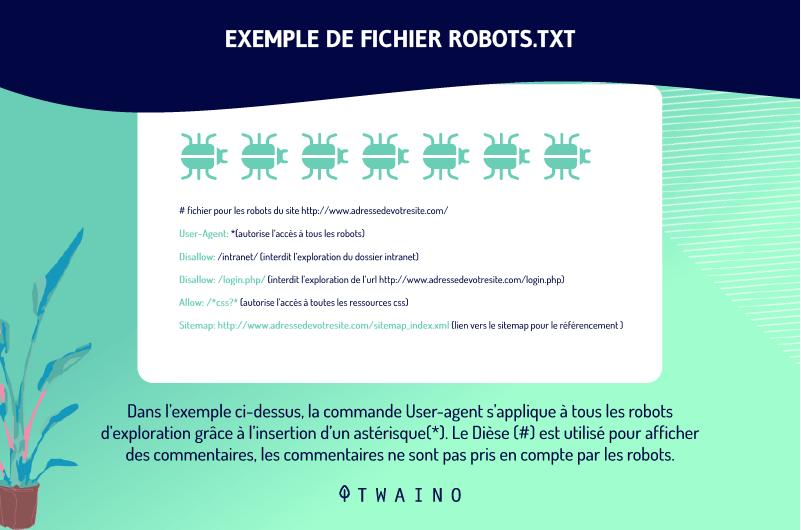
2.4. Google’s Position Against Mirror Sites
One thing is certain, it is not a straight line.
The search engine invests considerable effort in searching for mirror sites which it takes care to penalize in one way or another.

Therefore, the mirror sites which are removed from the Google index are those which try, through dishonest tricks and deceptions, to deceive the search engine and its robots.
Furthermore, if a mirror site is brought to the attention of the search engine and it does not disappear from Google’s index in the following hours, this in no way means that Google has pardoned it or that he doesn’t plan on ejecting it from his index finger.
Google does not indiscriminately delete mirror sites from its database.
The search engine, thanks to its powerful algorithms (Googlebots), carefully apprehends and analyzes each mirror site before deciding on its sentence.

The search engine must act carefully with regard to mirror sites.
And for good reason, for short periods, Google uses the technique of mirror sites to carry out functional tests of its filters with the intention of improving its algorithms.
Chapter 3: Mirror site – Mirror site: For or Against?
Should we use the mirror site technique or not?
3.1. The arguments for setting up mirror sites
The uses of mirror sites are numerous and important. The legitimate and justified deployment of mirror sites, as well as their multiple advantages, demonstrate their benign, favorable and necessary nature for SEO.

This is how we associate the following legitimate uses with the process of mirror sites:
- Set up an efficient backup system;
- Carry out comparative tests between the main site and its replicas in order to assess, for example, the power of the different servers and their statistical impact on traffic;
- Preserve the contents of a closed or about to be closed website (or page);
- Download large files quickly, even for users who are miles away from the original server;
- Circumvent censorship for freedom of information;
- Balance server loads to ensure a better user experience;
- Counterbalance a temporary traffic spike on the original site;
- Improve the site’s ranking on search engines;
- Bypass firewalls or any other computer unblocking program;
- Etc.
3.2. Arguments against the creation of mirror sites
The arguments against using the mirror site technique are, as a general rule, quite numerous and, to say the least, very convincing.
3.2.1. The existence of other more effective alternatives than the creation of mirror sites to streamline the traffic of a website
Although there are some pretty cool benefits to using mirror sites, it is important to keep in mind that these benefits are not specific to them.

Indeed, there are many ways and techniques to obtain the same results without having to create mirror sites.
And for good reason, it is quite possible, for example, to increase the traffic of a website without having to duplicate it in several versions.
3.2.2. The use of mirror sites for fraudulent purposes
The notion of good would lose its meaning if the notion of evil did not exist
When we take into account all that has been said so far, it seems obvious that the mirror site technique can be used for dubious purposes.
Indeed, mirror sites are used among others to :
- Attempt to improve in a fraudulent way, the PageRanking of websites and their positioning in the SERPs;
- Illegally make revenue in terms of advertising;
- Plagiarize a website that is sometimes a competitor;
- Etc.
3.2.3. The numerous disadvantages of a mirror site
There are certainly advantages, but also disadvantages for the creation of mirror sites.

Indeed, the mirror site technique has many limitations. We can thus cite:
- The obvious and, to say the least, catastrophic notion of duplicate content associated with it;
- The obsolete nature of its use for SEO optimization of websites;
- Its strong affiliation with spamdexing and its many uses in Black Hat SEO;
- Its anti-SEO effects, in particular the dilution of the popularity of the main site, when certain websites link to the mirror site;
- The difficulty in distinguishing the original site and its copies;
- The sometimes distorted identity of the main site;
- The confusion between the process of mirror sites and phishing, cybersquatting or even typosquatting techniques;
- The consequences of such confusion on user confidence in the original site;
- If the mirror site is not continually updated, users will have to wait for it to renew and add missing elements;
- Setting up mirror sites requires the installation of several servers, which results in more expensive maintenance costs;
- And many others.
3.3. Finally, should we use the mirror sites technique?
After weighing the pros and cons, it appears that the use of mirror sites offers, on the one hand, a certain number of non-specific and more or less interchangeable advantages.
On the other hand, the technique has many disadvantages and it is involved in the application of many unethical techniques.
To top it off, the Google search engine works to track down and punish mirror sites and their original sites.
We therefore agree that the arguments against it outweigh the rest.
It might be better to avoid mirror sites.
Rather than taking unnecessary risks overall, it is better to opt for permanent redirects to a single website (theredirection 301, 308 redirection and others).
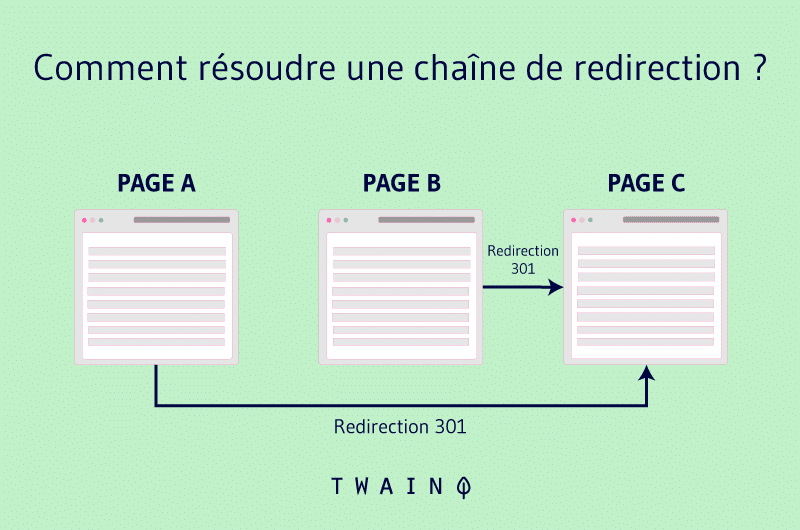
A technique that gathers all the advantages offered by mirror sites while protecting them from their disadvantages.
Chapter 4: Frequently asked questions
4.1. What is a mirror site?
In general, in computer science, the concept of a mirror refers to an exact and conforming copy of a set of data. On the Net, when we talk about a mirror site, we are talking about an exact copy of an existing web site that has been hosted on a separate server with its own domain name.
In other words, a mirror site is a site M that duplicates the content of a site P, but on a different server.
4.is it legal to create mirror sites?
Of course, if the owner of the site wishes, he can legally duplicate a version of his site accessible on a distinct URL in order to balance the server loads and offer a better experience for his users
However, it must be recognized that mirroring can be used for fraudulent purposes such as setting up a Link Farm network or extorting personal data from users
In these cases, mirroring can result in a Google penalty or lawsuit
4.3. What are the benefits of mirroring?
Mirroring a website has some interesting advantages such as
- Preserving the contents of a closed or soon-to-be-closed website (or page)
- Downloading large files quickly, even for users who are a thousand miles away from the original server
- Bypass censorship for freedom of information
- Balance server loads to ensure a better user experience
- Counteract a temporary traffic spike on the original site
- Improve search engine rankings;
- Bypass firewalls or other computer unblocking programs
- Etc.
4.4. What are the disadvantages of a mirror site?
Despite the advantages that you can benefit from creating a mirror site, the practice also has disadvantages that are not negligible such as
- The duplicate content side which is a fraudulent practice classified as Black Hat SEO
- The dilution of the popularity of the main site;
- The difficulty for Internet users to recognize the original version of the site
- Confusion between mirroring websites and other cyber attack techniques
- Lack of trust in the ranks of Internet users;
- Delay of the original website’s information if the copied versions are not regularly updated
- The need for more servers makes maintenance costs higher
- Etc
4.5. What is the difference between mirroring and backing up a website?
Although they may be confusing, mirroring and backing up a site do not mean the same thing and are different in many ways
The notable difference is that when a site is mirrored, all the files and static versions of HTML code it contains are copied and uploaded to the mirror site
This cloned version of the original site can then be easily hosted and visited by Internet users, which is not possible with a website backup.
In conclusion
To conclude, we can say that the technique of mirror sites allows to physically duplicate a website and its content.
The replicas created are for obvious reasons (accessibility, availability, and others), stored on separate servers located around the world
It is a technique that offers rather interesting advantages, but also combines several disadvantages.
It is a technique to be used with caution, and it is sometimes preferable to avoid it in favor of more advantageous and current practices.
That’s it, we’re at the end of our study on mirror sites. I hope that the article was useful to you, do not hesitate to share in comments, your opinions and experiences on the subject.
Thanks and see you soon!



